PHYSICS 232/2
PRE TRIAL EXAM 018
TIME: 2 HOURS
ALLIANCE HIGH SCHOOL PRE-TRIAL EXAM 2018
INSTRUCTIONS TO CANDIDATES
Answer all questions in both sections in the spaces provided in this paper.
Mathematical tables and electronic calculators may be used.
Use the following constants. Plancks constant 6.63 x 10-36 JS: Speed of light C = 3.0 x 108 m/s
Charge of an electron = 1.6 x 10-19C
SECTION A (25 Marks)
- State how the resistance of a thermistor varies with increase in temperature. (2 mks)
- State two conditions for total internal reflection to occur. (2 mks)
- State the main reason why aluminum wires are used for overhead power transmission. (1 mk)
- In the figure below, the switch is closed and the magnet displaced vertically downward so that it can oscillate up and down.

Explain why the oscillations die off very fast. (3 mks) - The critical angle of glass is 42. Calculate the angle of refraction for a ray moving from air to glass if the angle it makes with the interface is 50o (3 mks)
- A student was able to focus an object from outside the window of the physics lab onto a screen using a lens. The distance from the lens to the screen where image of the object was focused was found to be 15cm. Determine;
- The lens that was used. (1 mk)
- The radius of the curvature of the lens (2 mks)
- The circuit for a full wave rectifier using four diodes is shown below.
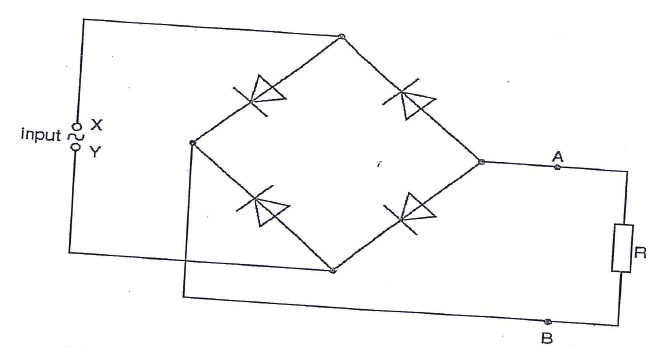
A resistor R is connected across the output AB of the rectifier. On the figure above,-
- Draw a circle around any diodes that conduct when the terminal X of the input is positive with respect to the terminal Y. (2 mks)
- Label the positive and the negative terminals of the output AB (2 mks)
-
- Explain why a radio reception is cut off when a vehicle passes through a tunnel. (2 mks)
- State why switches are normally placed on live wires and not on neutral wires in domestic wiring circuits. (2 mks)
- State how the following are minimized in a Lenchlache cell.
- Polarization. (2 mks)
- Local action (1 mk)
SECTION B (55 Marks)
- A uniform resistance wire AB has length 50cm and diameter 0.36mm, the resistivity of the metal of the wire is 5.1 x 10-17 Ωm
- Calculate the resistance of the wire AB. (2 mks)
- The wire AB is connected in series with a power supply E and a resistor R as shown in the figure.
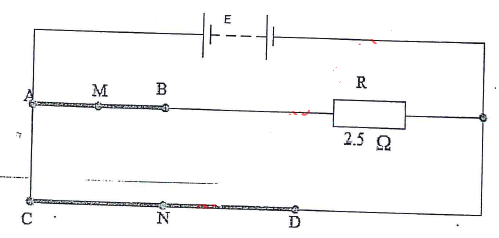
The electromotive force (emf) of E is 6.0v and its internal resistance is negligible. The resistance of R is 2.5 Ω. A second uniform wire CD is connected across the terminals of E. The wire CD has length 100cm, diameter 0.18mm and is made of the same metal as wire AB.
Calculate- The current supplied by E. (4 mks)
- The power transformed in wire AB. (2 mks)
- The potential difference (pd) between the midpoint M of wire AB and the midpoint N of wire CD. (2 mks)
- Briefly describe one phenomena associated with the photoelectric effect that cannot be explained wave theory of light. (2 mks)
- The maximum energy Emax of electrons emitted from a metal surface when illuminated by light of wavelength λ is given by the expression Emax = hc(1/λ - 1/λo) where h is the plancks constant and c is the speed of light.
- Identify the symbol λo (1 mk)
- The variation of 1/λ with Emax for the metal surface is shown in the figure below.
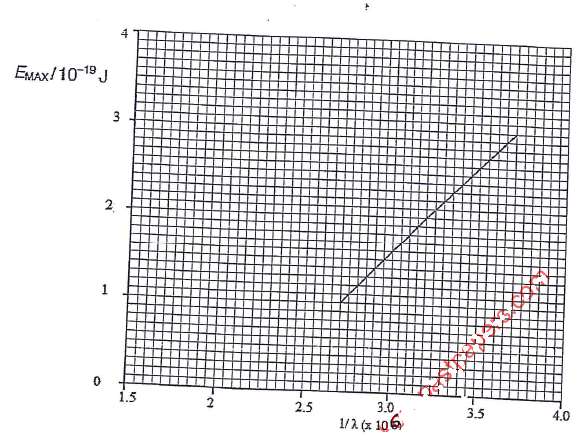
Use the figure to determine the magnitude of λo (3 mks)
- From the above figure, determine plancks constant h. (3 mks)
- The metal surface in c becomes oxidized. Photoelectric emission is still observed but the work function energy is increased. On the figure above, draw a line to show variation with 1/λ of Emax for the oxidized surface. (2 mks)
-
- Emission from a radioactive source pass through a hole in a lead screen and into a magnetic field, as shown in the figure below. The experiment is carried out in a vacuum.
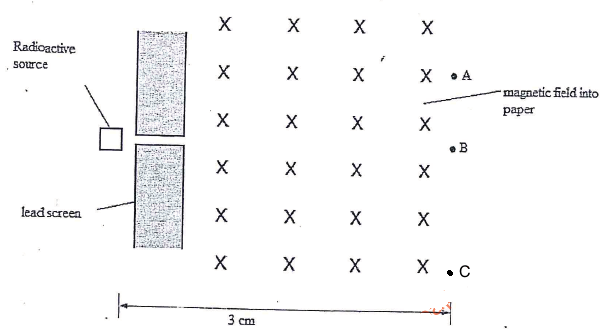
Radiation detectors are placed at A, B and C. They give the following readings.
A B C 32 counts/min 543 counts/min 396 counts/min
The radioactive source is then completely removed and the readings become
A B C 33 counts/min 30 counts/min 31 counts/min
From the data given for positions A, B and C, deduce the type of emissions coming from the radioactive source. Explain your reasoning.(5 mks) - The background count rate of radioactivity in a laboratory is 30 counts per min. A radioactive sample has a half life of 50 minutes. The sample is placed at a fixed distance from a detector. The detector measures an initial count rate from the sample, including background of 310 counts per minute.
On the figure below, plot suitable points and draw a graph of the count rate form the sample corrected for background, as it changes with time. (5 mks)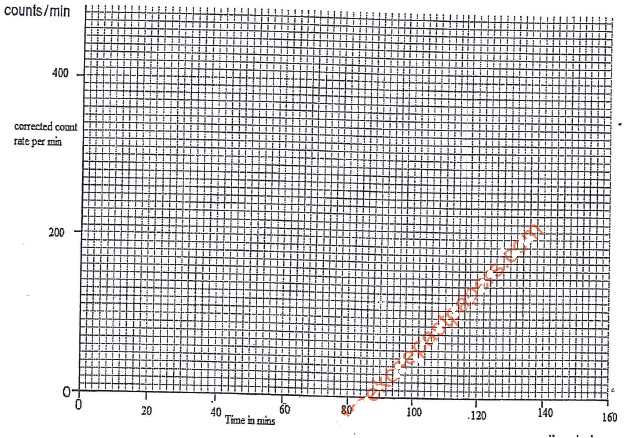
- Emission from a radioactive source pass through a hole in a lead screen and into a magnetic field, as shown in the figure below. The experiment is carried out in a vacuum.
-
-
- Draw a circuit symbol for a diode. (1 mk)
- State the function of a diode. (1 mk)
- The figure below shows the proposed system for charging the battery of an electric toothbrush.

The handle of the brush contains the battery and coil X. The circuit from coil X to the battery is not shown. The base of the charger contains a coil Y, wound on an iron core, connected to the AC mains supply. To charge the battery, the handle is lowered so that coil Y is inside coil X, the figure above shows the direction needed for the charging current at the battery.- On the figure, complete the circuit from terminals A and B of coil X to the battery. Include a diode. (3 mks)
- Explain how an alternating voltage is produced in coil X. (3 mks)
-
- An oscilloscope is used to measure the voltage wave form across a 200Ω resistor. The waveform is shown in the figure below. The time base of the oscilloscope is set at 5ms per div and the y gain at 0.5V per div.
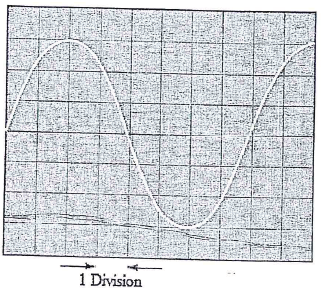
Determine:- The period and hence the frequency of the waveform. (3 mks)
- The peak voltage (3 mks)
- State two reasons why a cathode ray oscilloscope is preferred to a voltmeter in measuring voltage. (2 mks)
-
- State one difference between progressive waves and stationary waves. (1 mk)
- A source of microwaves is placed infront of a metal reflector R as shown below.

A microwave detector D is placed between R and S.- Describe how stationary waves are formed between R and S. (2 mks)
- Describe how D is used to show the stationary waves are formed between R and S. (2 mks)
- The wavelength of the microwave in (b) is 2.8 cm. Calculate the frequency in MhZ of the microwaves. (3 mks)
Download Physics Paper 2 - Alliance High School Pre-Trial Examination 2018.
Tap Here to Download for 50/-
Get on WhatsApp for 50/-
Why download?
- ✔ To read offline at any time.
- ✔ To Print at your convenience
- ✔ Share Easily with Friends / Students

